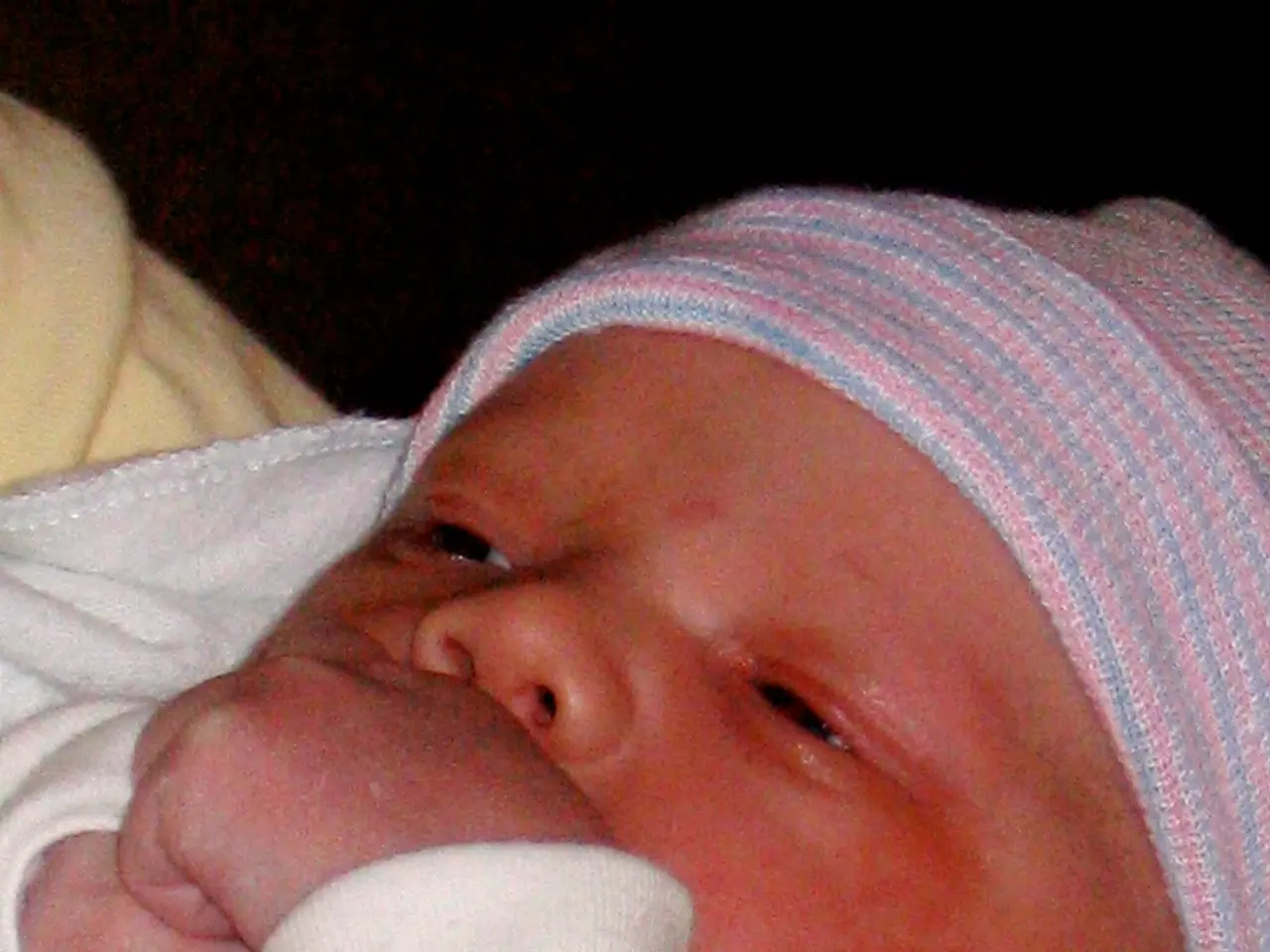Newborn Skin Peeling: An Explanation of Possible Causes
Newborn Skin Peeling: A Common and Temporary Process
Newborn skin peeling is a common occurrence that usually resolves on its own within a couple of weeks. This natural shedding of the outer skin layer is often related to the loss of the protective vernix caseosa coating present at birth, particularly in full-term or post-term babies.
While peeling is typically a normal process, it can sometimes be a sign of other conditions such as dry skin, eczema, ichthyosis, psoriasis, or diaper rash. To differentiate between normal peeling and other skin issues, it's essential to pay attention to accompanying symptoms.
If the peeling is just flaking skin without redness, irritation, or rash, it's most likely normal newborn skin peeling. However, if peeling is accompanied by redness, itching, rash, blistering, or discomfort, it may indicate eczema, infection, or another skin condition requiring medical evaluation.
Caring for Newborn Skin
To ensure the best care for newborn skin during the peeling process, follow these tips:
- Avoid using lotions and oils unless recommended by a pediatrician, as they can irritate newborn skin or worsen problems.
- Use mild, fragrance-free cleansers and sponge baths with warm water.
- Let the peeling resolve by itself as the baby’s skin adjusts to the environment.
In summary, newborn skin peeling is usually a temporary, normal process. Watch for signs of irritation or rash to distinguish normal peeling from other conditions. Consult a pediatrician if uncertain or if symptoms worsen.
Here are five tips to help protect a baby's skin during the peeling process:
- Use a humidifier to maintain moisture in the air.
- Apply lotion sparingly, if at all, and choose fragrance-free products.
- Avoid harsh soaps and opt for mild, gentle cleansers.
- Dress the baby loosely to prevent irritation caused by tight clothing.
- Avoid excessive sun exposure to protect the delicate newborn skin.
Peeling skin may occur on various parts of a newborn's body, including the arms, legs, belly, back, or butt. If only flaking skin is observed on a newborn's scalp, it's likely they have cradle cap. Babies born past their due date tend to have more peeling due to greater exposure to amniotic fluid.
[1] Mayo Clinic. (2021). Newborn skin peeling: When to worry. https://www.mayoclinic.org/healthy-lifestyle/infant-and-toddler-health/expert-answers/newborn-skin-peeling/faq-20058141
[2] American Academy of Pediatrics. (2019). Bathing your baby. https://www.healthychildren.org/English/ages-stages/baby/diapers-clothing/Pages/Bathing-Your-Baby.aspx
[3] Cleveland Clinic. (2020). Newborn skin care. https://my.clevelandclinic.org/health/articles/16205-newborn-skin-care
[4] National Institute of Arthritis and Musculoskeletal and Skin Diseases. (2021). Psoriasis in Children. https://www.niams.nih.gov/health-topics/psoriasis-in-children
[5] National Eczema Association. (2021). Newborn Skin Care. https://nationaleczema.org/eczema/newborn-skin-care/








